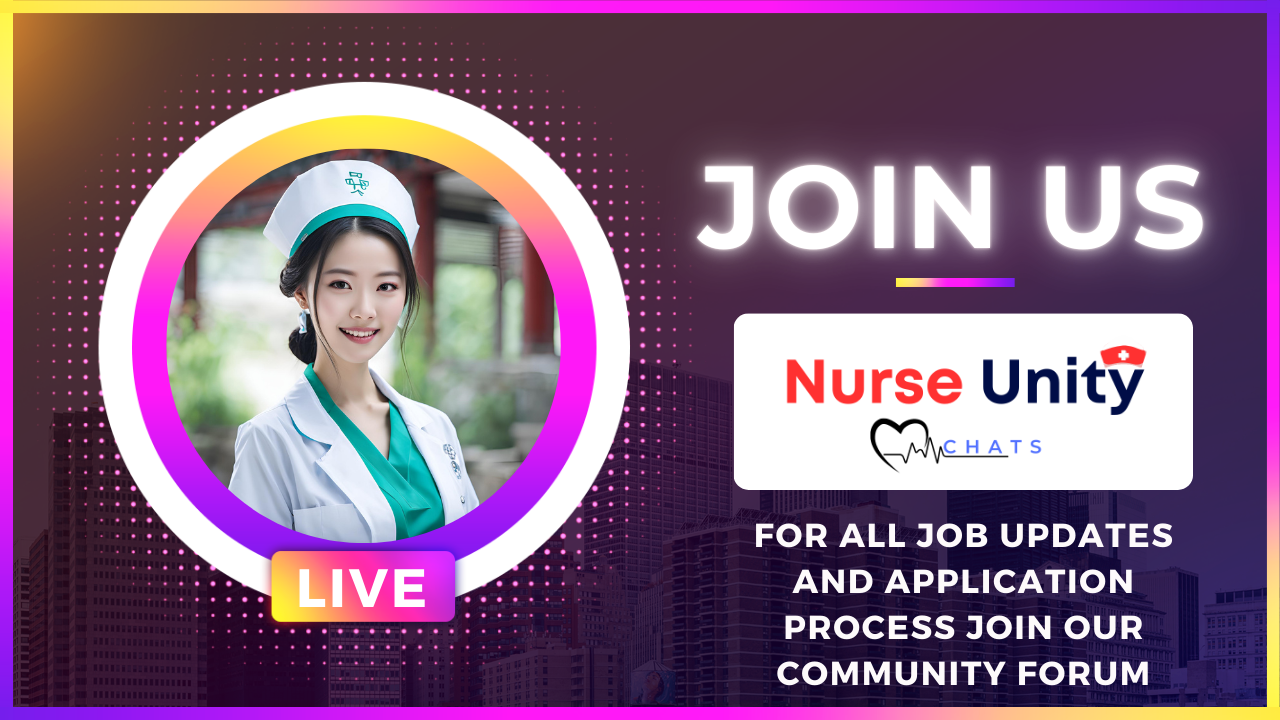
The H-1B visa is a U.S. non-immigrant work visa for foreign nationals who will be employed in a “specialty occupation” requiring at minimum a Bachelor’s degree (or equivalent) in a specific field.
Key points:
- It is employer-sponsored — a U.S. employer must petition on your behalf.
- Initially issued for up to 3 years, with possible extension to 6 years in most cases.
- There is an annual cap (for new petitions) and a lottery/registration process.
2. Can nurses apply via H-1B? What are the conditions?
Here’s where it gets specific for nursing:

✅ What can qualify
Some nursing positions do qualify under H-1B because they meet the “specialty occupation” definition:
- Advanced Practice Registered Nurses (APRNs) e.g., Nurse Practitioners (NP), Certified Nurse Midwives (CNM), Certified Registered Nurse Anesthetists (CRNA), Clinical Nurse Specialists (CNS) — these typically require a Bachelor’s degree + advanced training.
- Specialized nursing roles (critical care, oncology, informatics, management) that demand a Bachelor’s or higher and complex knowledge.
❗ What usually does not qualify
- Standard Registered Nurse (RN) positions (entry level) generally do not qualify for H-1B under “specialty occupation” because many RNs in the U.S. only require an Associate’s degree, not necessarily a Bachelor’s.
- So if you already completed your Anglo-Saxon exam and are looking at a standard RN role, this may not fit the H-1B path. In such cases, other visa categories (like EB-3) may be more realistic.
✅ What you should check
- Does your job offer in the U.S. specify that the position requires at least a Bachelor’s degree (or equivalent) for entry?
- Does your education/experience from India equal a U.S. Bachelor’s (or higher) if needed?
- Does your job come with duties sufficiently “specialized” that the bachelor’s/higher degree is justified (per U.S. rules)?
3. Step-by-step application process (for a nurse)
Here’s a practical sequence you can follow:

- Obtain a suitable job offer from a U.S. employer
- The employer must agree to sponsor your H-1B petition.
- The job must qualify as a specialty occupation (see section 2).
- You may need to highlight your advanced credentials, specialisation, leadership/management role, etc.
- Ensure your credentials/licensing path is ready
- As an internationally educated nurse you’ll likely need to have your education evaluated for U.S. equivalency (especially for immigration/visa/licensing). For example, through CGFNS International, Inc..
- You may need to pass the NCLEX‑RN (or corresponding state exam) and meet state licensing requirements in the U.S. is more advanced (NP, CNS, CRNA etc) then confirm you meet the required qualifications for that role.
- Employer files required U.S. labour documentation
- Employer gets a Prevailing Wage Determination and files a Labour Condition Application (LCA) with the U.S. Department of Labor.
- Employer must then submit the petition (Form I-129) to the USCIS on your behalf.
- H-1B registration / lottery
- For cap-subject H-1Bs (i.e., most new ones) the employer/agent must register the beneficiary electronically during the registration window.
- If selected, they can file the full petition. If not selected, you may have to wait for next year or explore cap-exempt routes.
- USCIS adjudication
- Once the petition is filed, USCIS reviews it, may request further evidence, and then issues an approval or denial. Processing times can vary.
- Visa stamping (if outside U.S.) / change of status (if inside U.S.)
- If you are in India (or outside U.S.), once petition approved you apply for the visa at the U.S. consulate and get stamped.
- Then you travel to the U.S. and begin work under H-1B status with the sponsor employer.
4. Timeline & key dates
- The registration period for H-1B cap is typically in early March (for the fiscal year starting October 1) for many years.
- The H-1B petition filing window starts after registration selection (for selected cases).
- Processing can take 4-12 months (or more, depending on case and whether premium processing is used) for nurses/healthcare roles.
- H-1B initial validity: up to 3 years, can extend up to 6 years total in many cases.
5. Required documents (for you + your employer)
Here’s a checklist (you can tailor for your situation):
Your documents
- Passport (valid)
- Educational credentials: degree certificate(s) (for nursing and any advanced degrees)
- Transcripts (marksheets)
- Education-credential evaluation (if required) showing U.S. equivalent degrees — especially if using foreign education/experience to qualify.
- License/registration as nurse in your home country (India)
- Proof of passing any required exams (e.g., NCLEX-RN if applicable, CGFNS VisaScreen)
- English-language proficiency test results (if required) — some states/boards may ask for IELTS/TOEFL.
- Curriculum vitae (CV) or resume showing your nursing experience
- Job offer letter from the U.S. employer (with details of role, salary, duties, etc)
- Any licences/certifications for advanced nursing practice if applicable (e.g., NP certificate, CRNA, etc)
Employer / Petition-related documentation
- Job description for the offered role (showing duties, minimum degree requirement, etc)
- Employer’s LCA certification from Department of Labor
- Employer’s proof that role qualifies as specialty occupation (if nurse role) — e.g., industry standard requiring BSN + advanced practice, or speciality duties.
- Employer’s ability to pay the wage (often in petition)
- Petition Form I-129 with required supporting evidence (filed by employer)
Bank account / financial statement requirement?
For the H-1B visa route itself, there is no specific requirement that you show a personal bank-statement of a certain amount like there is for some visitor visas. The key is that your employer demonstrates ability to pay, and you demonstrate you’re qualified.
However, for the U.S. visa interview you may want to show you have sufficient funds for travel/initial stay, but there is no published “minimum bank balance” specifically for H-1B for nurses. If asked, you should provide honest documentation of your financial condition.
Important: If you are combining other visa types or looking at long-term residence, you may need different documentation.
7. Useful websites / resources
8. Important cautions & realistic expectations
- Because standard RN roles often do not meet the “specialty occupation” definition for H-1B, it may be challenging to secure an H-1B for those roles.
- The lottery/registration means there’s competition and no guarantee of selection. So you should plan early and have backup options.
- Timing: the earlier you begin (job search, credential eval, licence preparation, employer sponsorship) the better your chance.
- Alternative visa pathways: If H-1B isn’t viable, you might explore the employment-based immigrant visas (such as the EB‑3 visa for nurses) which may suit more typical RN roles.
- Always consult a qualified U.S. immigration attorney or authorized adviser familiar with healthcare/nursing visas.
9. Sample timeline for you (from India)
- Finalise your credentials (BSN or higher) and get them evaluated (CGFNS)
- Pass NCLEX-RN (or required U.S. state exam) and obtain a U.S. state nursing licence (if possible)
- Identify U.S. employers / healthcare facilities willing to sponsor H-1B for advanced nursing roles
- Employer conducts job posting/prevailing wage/LCA & then registers you in the H-1B lottery (early March)
- If selected → petition filed by employer → USCIS adjudicates (4-12 months)
- Upon approval → visa stamping in India → travel to U.S. → start working
To the aspiring nurse from India or elsewhere: the path to the USA via H-1B is possible, but it’s specialised. Not every nursing job qualifies. The key ingredients are: advanced credentials + suitable job offer + employer sponsorship + timely documentation.
So, invest time in upgrading your qualifications, preparing your licence & credentials, and targeting roles that are “specialty nursing”. Start early, stay organised, and use reliable resources.
On Nursing Mandhira we’ll continue covering related topics (licensing exams, credential evaluation, US state board tips) — stay tuned!
Good luck on your journey — may you succeed and reach your U.S. nursing goals.
If you need assistance for doing the process, kindly contact nursingmanthra +971502515717
Discover more from Bibliobazar Digi Books
Subscribe to get the latest posts sent to your email.



